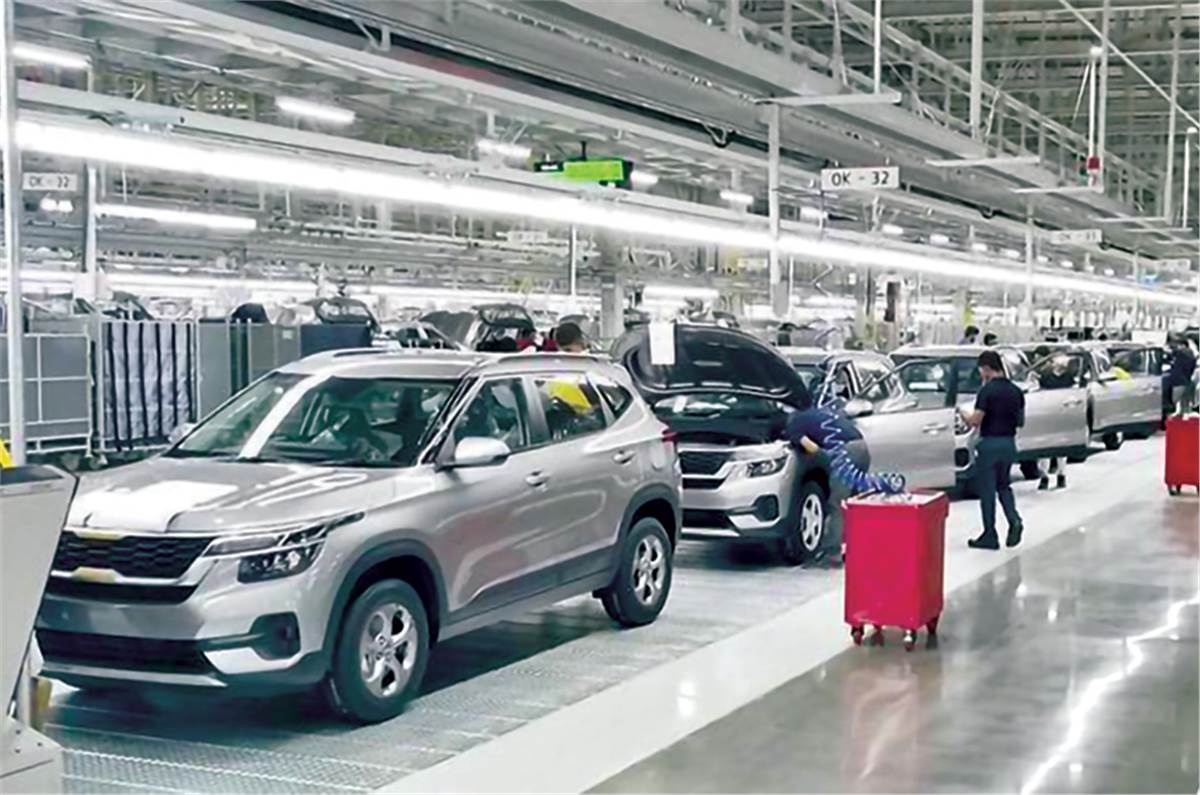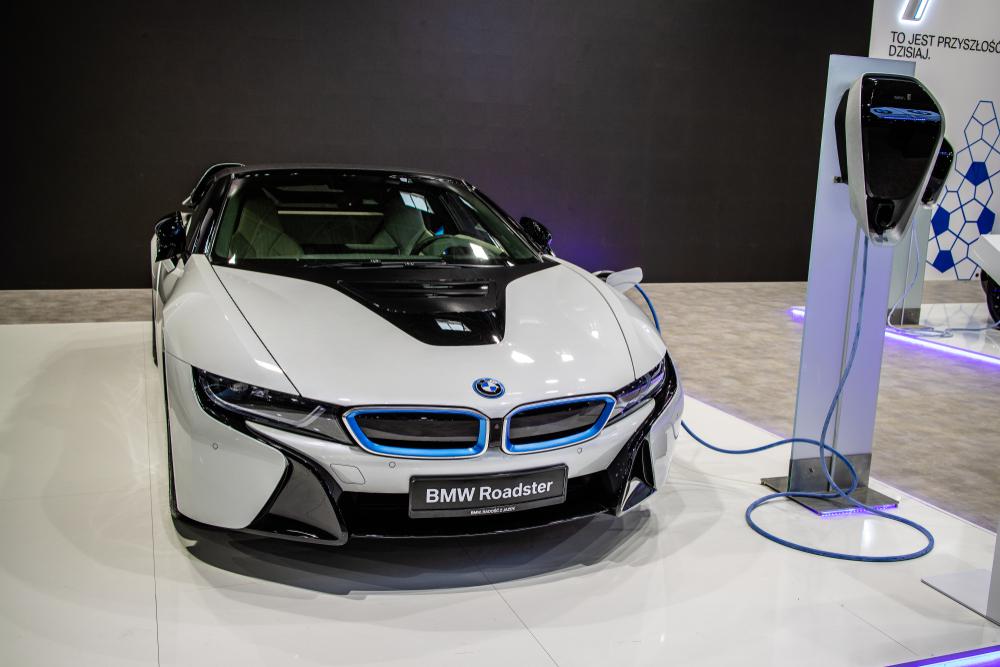
The automotive sector is now undergoing its most significant overhaul. This change is a crucial aspect of a digital fusion of social, industry, and technological factors to trigger a springboard of transport advancements. Given the sheer scale of this sector, we might rightly assume that it can continue to affect the path that society can advance in the future. Technological trends have often transformed how auto parts manufacturers & suppliers respond to evolving consumer behaviour, build partnerships, and improve. Here are a few trends that are developing in the automobile industry:
 Source: dnaindia.com
Source: dnaindia.com
#1.Blockchain
In recent years, the auto industry has faced several hurdles, and one of these challenges is the rising number of fake sellers. Blockchain is a possible alternative to be examined first. Minimizing the counterfeit pieces from the industry will increase transparency and contribute to highly successful marketing plans. This technology will build an accurate, trustworthy procedure for the growing distribution chain. Blockchain is a developing trend in the automobile sector that attracts many attention and expectations to the largest auto parts manufacturers.
#2. Autonomous Driving
This is, without question, the latest trend in the automobile industry. Although self-driving technology isn’t prevalent on the roads, it’s being tested around the world. Autonomous driving, due to the cooperation of several emerging technologies, would likely even conquer the highways. This technology has numerous advantages, from mitigating injuries induced by drowsiness to socializing drivers to fellow passengers. This has been the subject of debate in the area since Google began to experiment with autonomous driving ever since automotive components manufacturing companies have seen a spike of hope.
- Intvo
The American company introduces technology for pedestrian activity prediction. Compared to two-dimensional (2D) and 3-dimensional ( 3D) entity detection strategies that take minimal parameters into account, their approach tests for pedestrian head position, eye touch, leg activity, weather, and a risk-level. It eliminates false positives in the identification of pedestrians and increases the performance of autonomous vehicles.
- Udelv
Udelv offers automated cars for last-mile deliveries. It uses innovative AI algorithms for user-assisted supervision in unusual circumstances. The startup vans have an estimated payload capacity 360 kg (800 + lbs) and up to 100 km / h (60 mi / h) of speed. The vehicles supply food from nearby shops and send a push message when the order arrives.
 Source: Pixabay
Source: Pixabay
#3. Connected Vehicles
We have seen several intelligent technologies introduced in vehicles. Connected vehicles may share driving conditions such as emergency braking, speed, temperature, and more. It is only the start of what we might term vehicle connectivity (V2V), a Wi-Fi-like technology that will eventually become a regular function for virtually any automobile. It explains why in recent years, subjects such as automotive alarms, automobile transmissions, and wireless networking have been commonly debated among automotive accessories manufacturers.
Raise Of Shared Mobility – A New Business Model
The new business model has been developed with connected vehicles concentrating on shared mobility as an option to conventional vehicle ownership. It requires operation versatility (MaaS) and discourages idle cars. These options satisfy communities or industries’ needs without requiring additional vehicles, thus lowering wait times for fleets and emissions from gas or diesel cars.
- Beam
The Beam startup in Singapore focuses on e-scooters to encourage joint mobility in the Asia-Pacific region. Their scooters are equipped with an air-grade aluminium frame and customized to be shared, stable, reliable, and sturdy. Users locate the closest Beam scooter on the app and park it after the inaccessible trip areas. Furthermore, the micro-mobility network provides a sustainable solution to quick rides and aims to control urban traffic movement. And this is what we can call a revolutionary move by two-wheeler auto parts manufacturers.
 Source: Pixabay
Source: Pixabay
#4. Big Data & Data Analytics
Advanced analytics notify different choices throughout a vehicle’s life cycle during the age of big data. Vehicle data allow maintenance schedules, information models about their fleets and alerts the authorities concerned about crashes. Client automotive data can also drive sales standardizing supply chains and enhance new vehicle product design. It’s not just empowering the four-wheeler sector but also three-wheelers auto parts manufacturer & exporters.
- Unit8
To provide digital applications for diverse markets, Swiss venture Unit8 employs big data analytics. The startup creates statistical models for the automotive industry that enable automotive companies to boost promotions or activities and increase sales. These models offer visibility into commodity design, pricing, and after-sales operation.
- Procon Analytics
The US-based business Procon Analytics utilizes Big Data to provide a solution for automobile financing. The solution gathers massive amounts of data and analyses them in real-time so that lenders can evaluate and reduce threats immediately. Buy Here Pay Here (BHPH) allows retailers to expand their enterprises and offer highly risky client loans. Besides, this also includes software applications for fleet and asset management and connected vehicles.
#5. Eco-Friendliness
Environmental considerations have guided the rise of zero-emission vehicle technologies. The safer and greener electric vehicles (EVs) and hybrid electric cars (HEVs) are growing in popularity. Today, over 5, 6 million EVs are on the road, 64% more than in 2018. By 2030, 55% of all vehicles sold in Europe would be entirely electric powered. Tesla is still the most prominent EV maker; meanwhile, other automobiles electrical spare parts manufacturers & suppliers are also appearing in the picture. Electric cars are exciting, provided that we have green electricity. Currently, 90% of people have energy from coal power, which transfers pollution to another location.
 Source: haultail.com
Source: haultail.com
#6. 3D Printing
3D printing is a tech that has infiltrated virtually all facets of existence gradually, and the automobile field is no stranger to this invasion. Cars are currently built to survive 3-5 collisions and last for between 7-10 years. 3D printing can help create a sturdy chassis for its external structure optimized for a single accident, and can only easily modify the outer shell while preserving the chassis. It could lead to a radical change in repairs to accidents. 3D printing makes it extremely cost-effective to build stuff and threatens the basic automotive design approach, hence helping automobile spare parts manufacturers much.
In Conclusion
Further manufacturing close assembly facilities, automatic AI audits, the use of big data to guide development and manufacture, along with human-machine interfaces, have helped to reinvent automobile industry manufacturing processes. The driverless driving and autonomous vehicles are reinforced by progress in machine intelligence and IoT. It also enables innovative business structures of shared car ownership, analytical servicing, safety upgrades, and insurance. Also, startups and developing companies create technologies that allow vehicles to connect safely and transact across a network.



